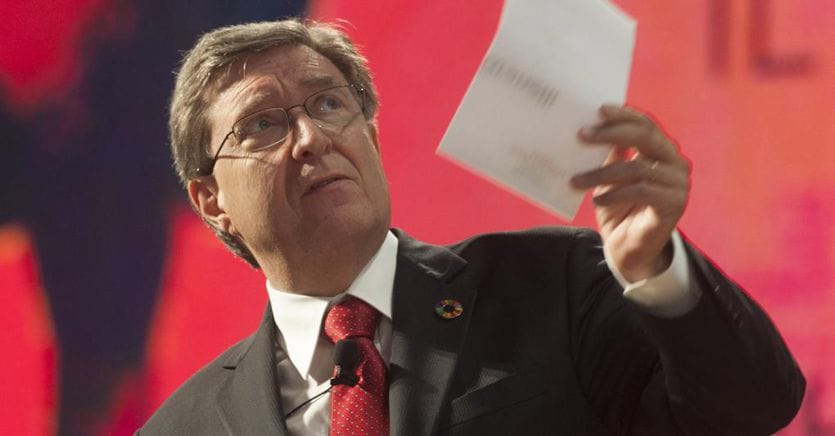April 30 was «an important day, with the sending of the NRP to Brussels. Made even more important by the decisions of the Council of Ministers on Thursday which integrated the plan with two fundamental aspects: the complementary fund of 30 billion and another 10.3 billion to complete the Salerno-Reggio Calabria and Milan-Venice high-speed trains. I had said that the implementation of the NRP would start on 1 May. I was taken at my word: with these two funds we have ten billion available to start immediately ». The Minister of Infrastructure and Sustainable Mobility, Enrico Giovannini, is certainly among the winners of the battle of the NRP: he comes up with 62 billion to spend, 14 more than the January plan.
Minister Giovannini, before going into the merits of the projects I would like to ask you a system question. In 1992 we had Tangentopoli and the EU directives that imposed a transparent and competitive market for tenders, with the obligation of tenders, and put an end to a system based on silent sharing. But the Merloni law, which came into force and immediately suspended, did not create a new system. Since then that film has been repeated every 3-4 years, new code, suspensions, reverse, while public investments have gone from over 3% of GDP to much less than 2%. We add that at the time of 3% there was no environmental impact assessment with all its slowness. What makes you think that the PNRR will make us go back to racing?
A reading entirely linked to the rules would make us lose sight of other important factors that have characterized our history of the last thirty years: the rush to enter the first group of the monetary union, the budgetary restrictions that have not corrected current spending but have cut investments. And then, when the Italian economy had begun to grow more, the crises of 2008-2009 and 2011-2012 arrived. However, the low rate of propensity to invest in the future did not concern only the public and only the infrastructures, but also private investors and sectors other than infrastructures. With this I do not want to deny that there were the limits you mentioned.
Loading…
So there is a problem of rules. Why will it be different this time?
If she has to write an article for the newspaper on Monday, she has a deadline that cannot fail. If, on the other hand, you submit an article without a deadline, you don’t know when you will deliver it. In public works the delivery date is not fixed. Procedures are established on which the delivery date then depends. In the Pnrr the order of causality is reversed: the works must be completed by a certain date and therefore the procedures must be revised to achieve that goal. It is not enough to say “let’s simplify” because even if we simplified to get to 2027, it would still be too late. This is the guiding element that has been driving our work for a month and a half.
Can you give us a concrete example?
I have been somewhat criticized for having set up, together with Minister Brunetta, a commission comprising the Council of State, the Court of Auditors and the Anac, because, it has been said, commissions take a long time. Well, in this month and a half many processes have started in parallel that have produced a large number of simplification, reengineering, speeding up proposals that are now being examined by the Prime Minister. The difference from the past is right here: for the first time a delivery deadline is applied in Italy and this changes the whole game.
Will it not clash with that national attitude whereby procedure is always the main element?
The government’s effort is precisely to reverse the order of factors and this is the reason why I proposed to involve, immediately and together, three institutions that have important roles in terms of procedures. In the past these institutions, even legitimately on the basis of their role, have underlined some aspects rather than others and it was the legislator who had to find a synthesis. This time we have tried to find the synthesis from the beginning and this is an important signal of how all Italian institutions, not just the government, are dealing with problems in a different way than in the past.
